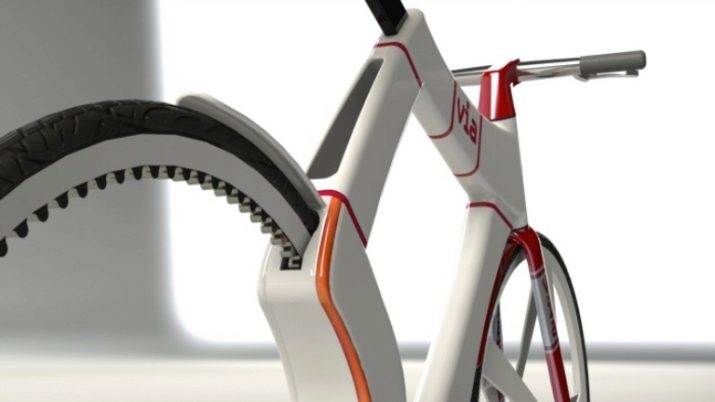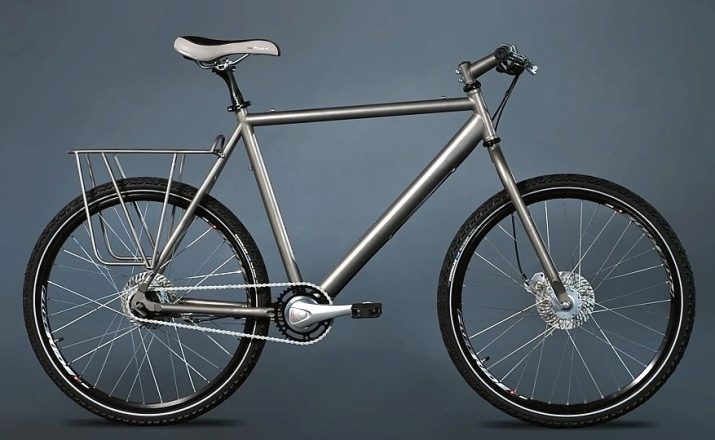Bicycle weight: what is it and what does it depend on?

Many novice cyclists do not think about how much their bike weighs, and only after "winding" more than one hundred kilometers, they begin to ask themselves this question. But experienced bikers, who spend a significant part of their free time on wheels, consider weight to be one of the most key characteristics and, when choosing a new model, try to find a middle ground between low weight and high quality bike.
What does the mass depend on?
Bicycle weight is influenced by many factors, the determining one being the weight of the frame and the number of attachments. The weight of the frame, in turn, depends on the material of manufacture, as well as on its size and configuration. Metals such as steel, aluminum, carbon and titanium are used for production.
- Steel frames are distinguished by their high weight, low price and are most often used by most Russian manufacturers engaged in the production of budget bicycles. The advantages of steel frames include their high strength and long service life. Foreign bike manufacturers began to use chromium-molybdenum steel instead of low-carbon steel, which became a real breakthrough in bicycle production. Such structures weigh much less than their counterparts made of "ordinary" steel and are no less reliable.
However, due to their high cost for mass production, they are not used and are in demand mainly by professional athletes.

- Aluminum frames much lighter in weight than steel ones and have good strength. They represent the largest group and are installed on bicycles of the middle class.You can distinguish an aluminum frame from a steel one by welded seams, consisting of high and equal stitches in height, reminiscent of neat loops.
At their cost, aluminum frames represent the best value for money and are popular not only among amateur cyclists, but also among novice athletes.

- Carbon or carbon fiber is a new generation material and is the lightest metal used for making frames. Its structure consists of carbon fibers closely adhered to each other, covered with a layer of polymer resins. Carbon frames are very expensive and are installed mostly on professional bikes. The disadvantages of carbon fiber include its unrepairability, which makes it impossible to repair the frame if the frame breaks down.

- Titanium frames are the most expensive and very reliable. Installed on premium professional bicycles.

Attachments are another important factor affecting bike weight. For example, the presence of a bag, a bike bottle mount, a bell, fenders and a bike computer increases the total weight of the bike by 2-4 kg. The pedals add 150 g to the total weight, the footrest with mounting bolts - from 800 g to 1 kg, grips with a saddle - 400 g, and wheels that are too wide can add up to 0.5 kg of weight. Thus, in the presence of a complete "combat" kit, the total weight of the bike increases by an average of 5 kg.
What does this indicator affect?
The weight of a bike has a direct impact on several basic parameters such as stability, controllability, application of physical effort and roll. As the weight of the bike decreases, all four metrics improve, including stability.
By the way, it is she who raises a lot of doubts among novice bikers, who mistakenly believe that the greater the weight of the bike, the more stable it is. However, this is not the case.
When riding a two-wheeled bicycle, a person keeps it in an upright position by controlling the center of gravity of their body. On a bike that is too heavy, it is much more difficult to balance, as it takes more energy.... As a result, lightweight bicycles are much preferable to heavy ones and surpass them not only in ease of operation, but also in safety. Therefore, before you start choosing a bike, you need to know its weight.

Bicycle classification
The bike's weight is greatly influenced by its specialization. Below are the main types of bicycles and their average weight.
Heavyweights
This group includes touring and fat bikes. The first are mountain bike and road bike hybrids, have a strong steel (less often - aluminum) frame and large wheels with a diameter of 28''... Their weight ranges from 17 to 22 kg and depends on the configuration.
Fat bikes are mountain bikes that have very thick wheels and are designed for riding over rough terrain and hard-to-reach places.... Their weight sometimes reaches 20 kg, but more often it varies in the region of 18 kg.
Also, heavyweights include male road models of Soviet and Russian production with a steel frame, rear rack, front basket, steel fenders, headlight, bell, footboard, chain guard and large diameter wheels. Their weight often reaches 22 kg, and in some cases even exceeds it.
MTVs (mountain bikes) also fall into the same category. Despite the fact that their frame is often made of carbon, due to the heavy wheels their weight is often 17-19 kg.
And the weight of downhill and trial bikes often exceeds 20 kg, due to the reinforced structure required to work under heavy loads.


Medium bikes
This group includes city and mountain bikes with an aluminum frame, hardtails - bikes designed for country cross and downhill, and all kinds of hybrids - mixtures of mountain, road and city models in different variations.The weight of such samples ranges from 10-17 kg, which makes them the most popular and most numerous category, and for the manufacture of their frames, in addition to aluminum, carbon and titanium are used.


Light models
This group includes ВМХ - bikes for performing stunts... The weight of these models varies from 7 to 10 kg, which allows them to be lifted into the air and jumped with ease.

Very light
The basis of this category is road bikes, whose weight does not exceed 8 kg, as well as lightweight BMX weighing 5-6 kg. On-road models are available with carbon and titanium frames and do not have additional body kits. The absolute record holder is a road bike weighing 3.5 kg, however, by the decision of the International Cycling Union, models weighing at least 6.8 kg are allowed before the competition.

Baby
Bikes for children constitute a special category and require separate consideration. Very often, models with two side wheels, intended for preschoolers from 3 to 7 years old, are made of steel, trying to reduce the cost of the product as much as possible and make it marketable. As a result, the child is sometimes unable to budge, let alone climb a hill. This is especially true for new, not run-in models, on which the child needs to make every effort to turn the pedals one turn.
In this case, there is no question of any full-fledged riding, and upset parents sell the bike or put it away until better times. Manufacturers receive numerous complaints and are trying to remedy the situation.
However, so far only foreign companies have succeeded, and the weight of domestic models is still very high and often reaches 12 kg.

How to lose weight?
In order to make the bike lighter, some upgrades are recommended. However, the approach to this procedure must be reasonable and not lead to a deterioration in the performance of the bicycle.
- At the handlebars and seatpost, they cut off excess pipe parts, usually it is 3-5 cm.
- Accessories that do not affect the ride of the bike take off. These include the speedometer, bag, pump, lock, bell, fenders, and a kickstand. It is not recommended to remove the headlight and tail lamp, as they are responsible for safety.
- If necessary, reduce the number of gears, most of which are not used anyway. The sprockets weigh a lot, and getting rid of the excess iron significantly reduces the weight of the bike.
- Tires with a deep tread are changed to a fine semi-slick. Such rubber is much lighter than mountain rubber and allows you to move at higher speeds.
The following video will tell you how to reduce the weight of the bike.








